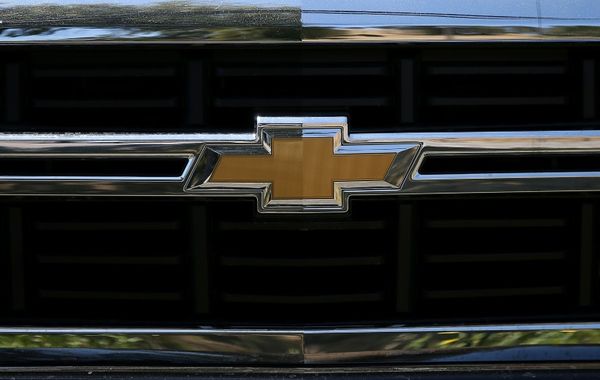Last year was a big one for Uber stock: shares doubled in value as the ride-hailing company posted its first year with an operating profit, leading to Uber's inclusion in the S&P 500. But how will Uber follow up that performance this year?
After joining the S&P 500 last year, Uber stock was recently added to the Dow Jones Transportation Average. Further, Uber shares got a big boost recently when the company announced plans for its first-ever buyback. Wall Street analysts also liked what the San Francisco company's leaders had to say during a virtual investor day. The ride-hailing and food-delivery firm also beat expectations with its most recent earnings, though that provided only a modest bump for Uber stock.
So is Uber stock a buy? Here's what to know about recent market action from the company:
Uber Joins Dow Jones Transportation Average
As of Feb. 26, Uber stock is one of 20 members in the Dow Jones Transportation Average. The 20-stock index added Uber to gain "exposure to the ride sharing industry," as the S&P Dow Jones Indices explained in a press release.
Uber replaced JetBlue Airways Corp.. JetBlue's stock, which was trading around 6.50 as of Feb. 27, had a weight of less than a half-percentage point in the price-weighted index, the announcement added.
The index includes commercial flyers such as Delta Air Lines, shippers such as FedEx Corp. and freight-haulers such Union Pacific.
The Dow Jones Transportation Average has gained about 10% over the past 12 months, compared to a roughly 135% gain for Uber.
On its first day in the DJTA, Uber stock traded flat. Shares are up 1.5% in early trading on Feb. 27 at 79.52.
Uber Stock Buyback Plan
After hinting at a buyback last fall, Uber made it official on Feb. 14. The company said its board has approved the repurchase of up to $7 billion in stock.
The buyback plan is "a vote of confidence in the company's strong financial momentum," Uber Chief Financial Officer Prashanth Mahendra-Rajah said in a news release.
Uber shares jumped more than 14% in trading that day.
The buyback announcement was part of a virtual investor day, where company leaders briefed Uber stock analysts. Uber offered new projections for the next three years. Over that period, Uber projects annual gross bookings growth in the mid- to high-teens. Gross bookings are the total dollar value of fares charged for transportation, food delivery and other services.
Further, the company said it expects adjusted EBITDA — earnings before interest, taxes, depreciation, and amortization — to grow in the "high 30s to 40%" annually over the next three years, as the company described in a regulatory filing.
Several analysts raised their price targets for Uber stock following the meeting, including BofA Securities analyst Justin Post. In a client note that day, he upped BofA's price target to 91, from 78.
"We continue to see strong network effects at Uber, and now Street has clear visibility on Uber's potential to be a top large-cap growth company in the Internet sector," Post wrote to clients.
Uber Stock Q4 Earnings
On Feb. 7, Uber reported results for the last three months of 2023. Uber earned 66 cents per share on an adjusted basis, up 127% from a year earlier. That easily topped analyst projections of 16 cents per share, which Uber officials said was helped by investment gains.
Meanwhile, revenue climbed 15% to $9.9 billion, topping estimates of $9.76 billion. And gross bookings grew 22% to $37.6 billion. That beat estimates of $37.12 billion.
Further, Uber posted an operating profit of $1.1 billion for the full year. That marked its first year of annual operating profit since going public in 2019.
"Looking back, 2023 was an inflection point for Uber, proving that we can continue to generate strong, profitable growth at scale," Chief Executive Dara Khosrowshahi said on the company's earnings call.
The march to profitability was helped by major cost cutting by Uber. The company got leaner largely out of necessity. In 2020, it laid off 7,000 people after the early months of the pandemic tanked its ride-hailing business. The company also jettisoned secondary efforts, such as building the tech behind self-driving and a flying car research project.
There are few bears left on Wall Street for Uber stock. Of the 52 analysts with coverage of the stock, 47 have a buy or buy-equivalent rating, according to FactSet.
"The company continues to execute, delivering consistent margin expansion with a multi-quarter track record of exceeding EBITDA guidance," Wedbush Securities analyst Scott Devitt wrote in a client note following the report.
Uber Eats Vs. Rides: Which Is Growing Faster?
After focusing initially on building a ride-hailing business, Uber expanded into food delivery which provided a lifeline for the company during the early months of the pandemic. Uber's delivery sales topped those from the flagship ride-sharing business for the first time in the second quarter of 2020.
But the rides business is now growing faster. For the last three months of 2023, revenue for Uber's mobility segment increased 29% year over year to $19.3 billion. Revenue from the delivery business grew 19% to $17 billion.
Further, analysts project Uber's rides-related sales will climb 28% to $5.5 billion in the current quarter, according to FactSet. Eats revenue is projected, on average, to climb 6% to $3.3 billion for three months ending with March.
Uber Stock Vs. Lyft (And Vs. DoorDash)
Uber and Lyft helped put app-based rides on the map more than a decade ago. But Uber has since left its nominal rival in the dust. Uber stock has a market capitalization near $165 billion as of Feb. 20. Lyft's market cap is $7 billion.
Uber has grown revenue and reached profitability significantly faster than Lyft. Plus, it has expanded into food delivery and international markets, whereas Lyft remained focused on rides in North America.
But Lyft did show signs of life in its fourth-quarter earnings report on Feb. 12. Lyft stock surged more than 30% in the next-day trading, helped by the company's positive 2024 outlook. Lyft projects it will achieve positive free cash flow in 2024 for the first time, an important step toward profitability.
RBC analyst Brad Erickson wrote to clients on Feb. 13 that the earnings report showed Lyft is "much more adequately competing with Uber." However, he said Uber remains RBC's long-term preference because of its "durable structural advantages."
On the food delivery front, Uber has a formidable rival in DoorDash. As of December, DoorDash has captured two-thirds of all U.S. food delivery sales, according to estimates by Bloomberg Second Measure, compared to 25% held by Uber and its Postmates affiliate.
A big difference, of course, is that DoorDash does not offer rides and Lyft does not deliver food. Uber is attempting to flex its broader platform through the Uber One membership program. The program offers discounts on both food delivery and rides, as well as fee-free food delivery from participating restaurants and retailers.
Uber Stock Regulatory Questions
Another factor to watch for Uber stock is the rules around gig work. Uber, as well as Lyft and DoorDash, classify the drivers and couriers as independent contractors, an arrangement often referred to as gig work. But regulators worldwide have scrutinized whether that it is a proper classification, as it leaves workers for each app without the benefits and legal protections afforded employees.
In January, the U.S. Department of Labor published a final rule setting stricter standards for when workers can be designated as contractors. Two year ago, a draft version of the same rule sank shares for Uber, Lyft and DoorDash. But investors appeared to shrug when the rule was made official last month. Uber closed 2% higher the same day, Jan. 9.
Uber said the rule will not change its operations.
"This rule does not materially change the law under which we operate, and will not impact the classification of the over one million Americans who turn to Uber to earn money flexibly," Uber said in a Jan. 9 news release.
Meanwhile, workers for Uber, Lyft and DoorDash apps are pushing for fairer pay and better treatment, including stronger protections against unfair deactivations. A coalition group called Justice for App Workers organized a Valentine's Day strike that called on drivers to decline airport pickups across several major U.S. cities, including Chicago, Miami and Philadelphia. The group says it represents more than 130,000 drivers and delivery workers. There was similar action in the U.K.
Uber, for its part, told Reuters in a statement that it did not see an impact on its operations from the strike.
How Is Uber Using AI?
Uber is also expanding its AI capabilities. Algorithms already power many features on Uber's app. But the company announced in September that it would add a conversational AI assistant to its Uber Eats app. Further, it said the product would help find new restaurants or set up grocery orders.
During the company's investor presentation on Feb. 14, Khosrowshahi said the company's AI capabilities are also powering a "multibillion dollar opportunity" selling advertising within its apps.
Separately, Uber said last fall that it is rolling out significant upgrades to the software powering its freight business. That includes a product called Insights AI, which the company said will draw on a trove of transportation data to help shippers answer questions and plan routes and other uses.
Something else to watch: Uber has been booking flights for customers of its app in the U.K. since last May. Barclays analyst Ross Sandler wrote in a client note last year that the test offering shows how Uber is positioned to eventually build a "Travel Concierge AI," helping book all forms of transportation.
"We want to be your, kind of, operating system for everyday life," Khosrowshahi said on Uber's earnings call in August. "Not just for you to go to work, but to be that travel companion as well."
Uber Stock's Technical Ratings
Uber stock holds a best-possible IBD Composite Rating of 99 out of 99, according to IBD Stock Checkup. The score combines five separate proprietary ratings into one. The best growth stocks have a Composite Rating of 90 or better.
Uber stock's Relative Strength Rating score is at 97 out of a best-possible 99, indicating it is significantly outperforming the market.
Further, Uber stock holds an Accumulation/Distribution Rating of A+. That rating analyzes price and volume changes in institutional ownership for a stock over the past 13 weeks. The current rating indicates more buying than selling by institutions.
Uber was recently added to the IBD Big Cap 20 stock list.
Also, Uber is on the IBD Leaderboard premium stock list. Following the jump for Uber stock on its buyback news, shares are trading well above the stock's 21-day and 50-day moving averages, according to IBD MarketSmith. Shares are also well above Uber stock's last proper buy point, which MarketSmith shows was 49.19 from a double-bottom base.
You can find regularly updated coverage of stocks near buy zones here. And here is a guide to understanding IBD's rating system.
Uber's Stock Performance Since 2019 Debut
You can check for Uber's current stock price here. Uber's market cap is roughly $165 billion, as of market open Feb. 27. Here is how the stock has grown over time:
| Time Period | Uber Stock % Gain | S&P 500 % Gain |
|---|---|---|
| Year To Date | 36 | 8 |
| Prior Year | 149 | 24 |
| 2022 | -41 | -19 |
| 2021 | -18 | 27 |
| Since IPO (May 10, 2019) | 91 | 78 |
*Prices as of market open Feb. 27.







